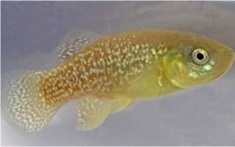Science Leadership
Superfund Research Program (SRP) staff and grant recipients are committed to advancing research by presenting innovative findings, tools, and technologies to stakeholders in academia, government, and communities.

The SRP welcomed 11 new and returning multiproject centers to the program. These NIEHS-funded grants are the mainstay of the program, where transdisciplinary teams of scientists and engineers working in different fields tackle complex but targeted problems in environmental health.
A recent publication by SRP staff and colleagues highlights how research investments by the SRP have had a significant impact on science, health, and society. According to the authors, documenting the benefits of these investments provides insight into how basic research is translated to real-world applications.
NIEHS SRP Centers across the country are contributing their expertise to respond to the coronavirus disease 2019 (COVID-19) pandemic. From increasing testing capacity and improving personal protective equipment to creating online tools and outreach materials, SRP researchers are fighting COVID-19 from the local to the global level.

For more than two decades, the Duke University and Boston University SRP Centers have used Killifish to understand the toxicity, mechanisms, and health effects of two groups of hazardous contaminants, polycyclic aromatic hydrocarbons and polychlorinated biphenyls. Killifish populations adapted to survive and reproduce in waters polluted with these contaminants. The latest SRP Public Health Impacts story describes how these researchers studied the evolutionary and genetic basis for this adaptation.
SRP Health Scientist Administrator Heather Henry, Ph.D., chaired the spring Federal Remediation Technologies Roundtable meeting, which was held via webinar on May 29 and June 5. The roundtable works to build a collaborative atmosphere among federal agencies involved in hazardous waste site cleanup. As part of the meeting, Henry provided an overview of SRP bioremediation work.
SRP Health Scientist Administrator Michelle Heacock, Ph.D., provided opening remarks for the National Academies of Sciences, Engineering, and Medicine virtual workshop focused on integrating the science of aging and environmental health research. The workshop explored emerging research at the intersection of aging, longevity, environmental exposures, and human health.
Two new studies from the Northeastern University SRP Center found links between poor birth outcomes and exposure to environmental chemicals, including metals and flame retardants. Both studies leverage the center's birth cohort to explore the environmental factors that contribute to preterm birth in Puerto Rico, which has one of the highest preterm birth rates in the world.
SRP grant recipients Matt Cave , Ph.D., from the University of Louisville, and Margaret Karagas , Ph.D., from Dartmouth College, were recently featured in NIEHS Stories of Success. The stories highlighted SRP work as well as other NIEHS research. Karagas studies how exposure to environmental chemicals affects health throughout the life course. Cave explores how environmental chemicals and diet can interact and contribute to liver disease.
to Top



